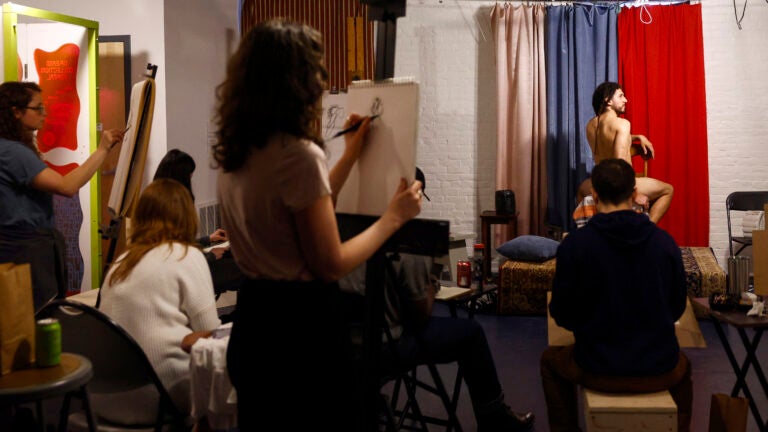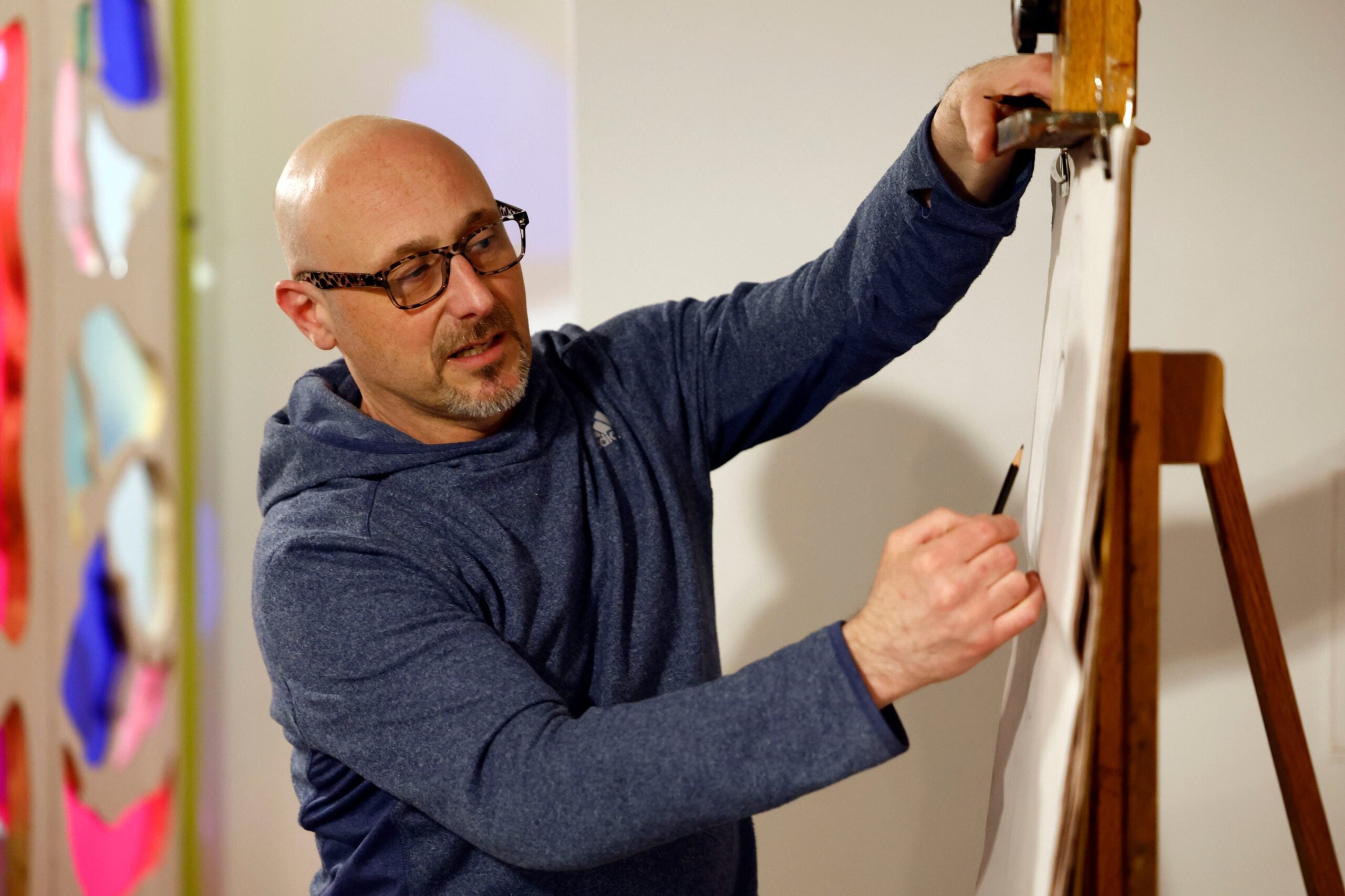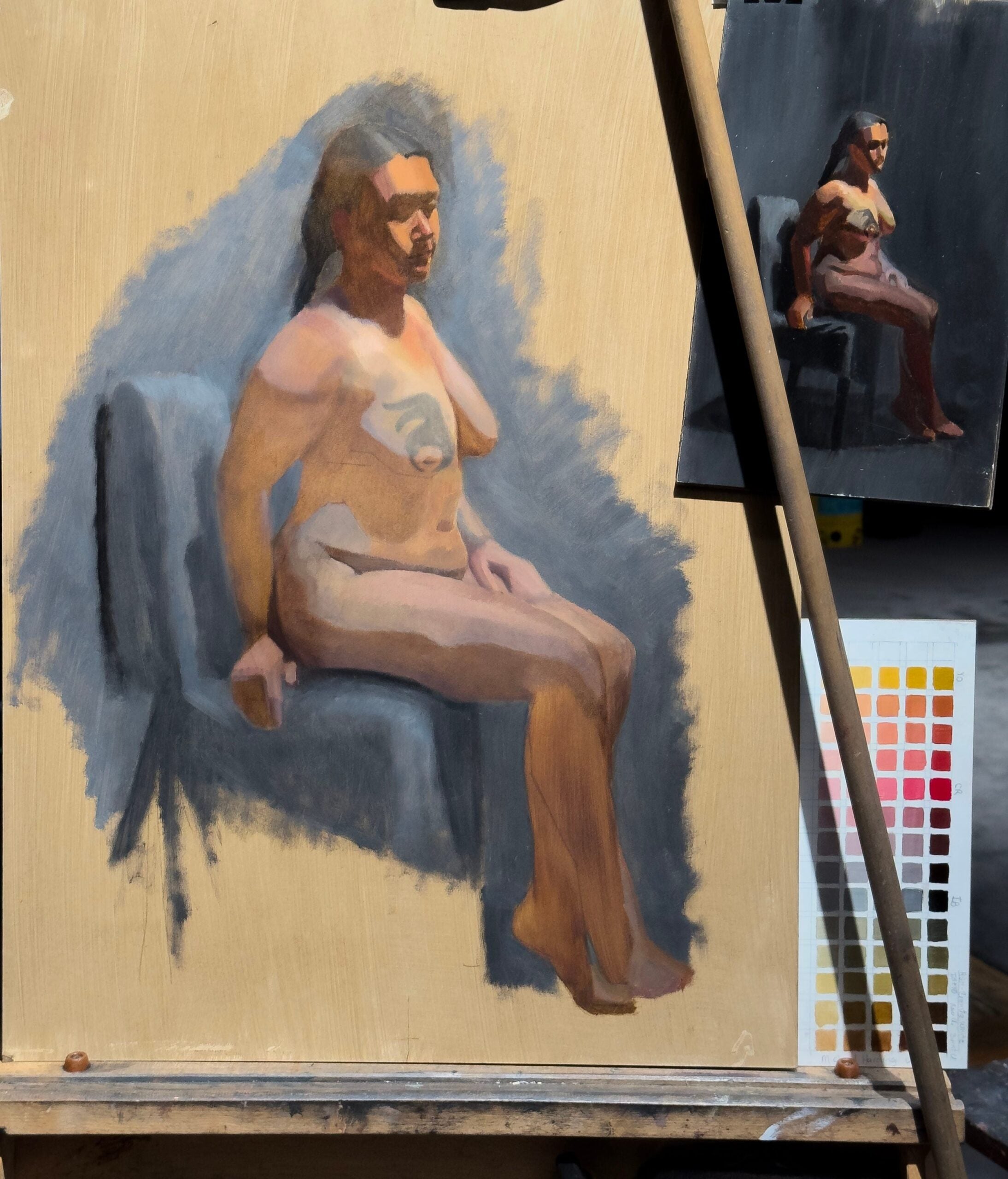The Boston Globe
“If we all saw each other naked in more casual settings, it wouldn’t be such a big deal anyway,” says one retiree, who’s been drawing at the Boston Figurative Art Center for a decade.

On a recent Thursday night, more than a dozen artists sat in front of easels at the Boston Figurative Art Center in Somerville, breezing through short sketches of nude model Collin Cherubim as a neighborhood cat wove through their legs. Every minute or so, Cherubim changed positions.
Cherubim, 32, a graduate student in astrophysics at Harvard University, started modeling to develop his meditation practice.
“I thought, ‘How can I practice sitting still, meditate, and maybe ideally get paid at the same time?’” he said. “And I remembered, my gosh, figure drawing.”

“The first time I got up there, I was terrified,” Cherubim said during a break, a blanket tied around his waist. “I was thinking to myself, ‘I might hate this.’” He felt shy.
“But I realized that there’s nothing really sexual about it,” he said. “And for me, it was kind of a big deal because it helped me become more confident and comfortable in my own skin.”
Retiree Mark McKinnon, 72, has been drawing at the Boston Figurative Art Center for 10 years. He became a model because he thought it would help his drawing skills.
“I have a theory that if we all saw each other naked in more casual settings, it wouldn’t be such a big deal anyway,” he said. “And you wouldn’t see this lascivious interest in nudity that we see in public discourse.”
McKinnon and Kay Aluvanze, 19, were among the artists sketching Cherubim. Aluvanze, a volunteer at the center who moved to Cambridge from Nairobi, Kenya, last year to attend Hult International Business School, recently started modeling.
“It might be intimidating if you’ve never been to a class before,” she said. “But for me, it was very calm.”
Modeling puts some stress on her body, she said, “but it’s like leg day at the gym.”
Boston Figurative Art Center opened 15 years ago at Somerville’s Vernon Street Studios. In January, a second venue opened on Washington Street. Members pay $75 monthly for three classes and open access to draw, paint, learn, and socialize.
“Fifteen years ago, people were drawing and painting the figure, but not like now. There’s been an enormous resurgence,” said the center’s founder, Damon Lehrer. He points to a post-pandemic thirst for community, and the physicality of the materials in an increasingly digital world.

The Academy of Realist Art, Boston, a private, atelier-level school, also opened in 2009. Back then, “we had two to five students on one floor. Now we have three floors and 150 students a semester,” said assistant director Julie Beck.
“Live figure drawing is different from looking at figures on a screen,” said Abraham Eversen Tena, assistant professor of illustration at Massachusetts College of Art and Design.
“A photo or video on the screen is a commodification of the body. It’s a thing to consume,” Tena continued. “But when you’re in a room with other people, there’s an interrelatedness. The model depends on the artists to feel safe, to be taken care of and respected.”
Since he started teaching in 2012, Tena said, the modeling population has changed. “There were markedly more young women,” he said. “More specifically, young white women.”
Observing and rendering a variety of body types, skin tones, and gender expressions makes for better artists.
Two years ago, Jami Hurley, 47, left 9-to-5 work in auto detailing and end-of-life care to become a life model. Now the mother of three and grandmother of one, she models full time, booking two to three months in advance.
“I had no idea how stillness could be turned into an art form in itself,” she said. “You move, then you pause for a minute, or 20 minutes, or an hour. You’re trapped in that bubble of time.”

“The discipline is staying in the moment, keeping that expression in my body, my muscles, my face,” Hurley said. “Artists connect with that, and it energizes them to stay engaged.”
That artistry goes to another level for models like Hurley and McKinnon, who work at the Academy of Realist Art.
“I think of us as a trade school, like the North Bennet Street School,” said Beck. “We teach a tangible skill set” in realist drawing and painting.
“Our shortest pose is much longer than most other people’s poses. We look for 10 to 15 extremely accurate lines by the end of three hours,” Beck said. For the models, she added, “It’s physically demanding. You can hurt yourself.”
Models take the same pose for up to 10 hours a week over a 10-week period.
“You have to have a strong core and strong legs if you’re trying to hold a dynamic pose,” Hurley said. “It’s not natural for the body to stay so still. There are pressure points. Staring at one spot for so long, you may fight dizziness.”
If the academy’s approach to figure drawing is technical, in his Tuesday afternoon class at the New Art Center in Newton, drawing instructor Robert Siegelman emphasizes expression.
“Having the human being as a model is a way of getting right to that expression,” he said. “How does their body express something? What are their poses? Are they very withdrawn or exuberant?”
Hurley seems up for anything. “The body, with so many minute shifts with a turn, is an amazing tool for forming into a creative shape,” she said. “When that magic happens between the artist and a model, it really propels the artwork.”








Leave a Comment